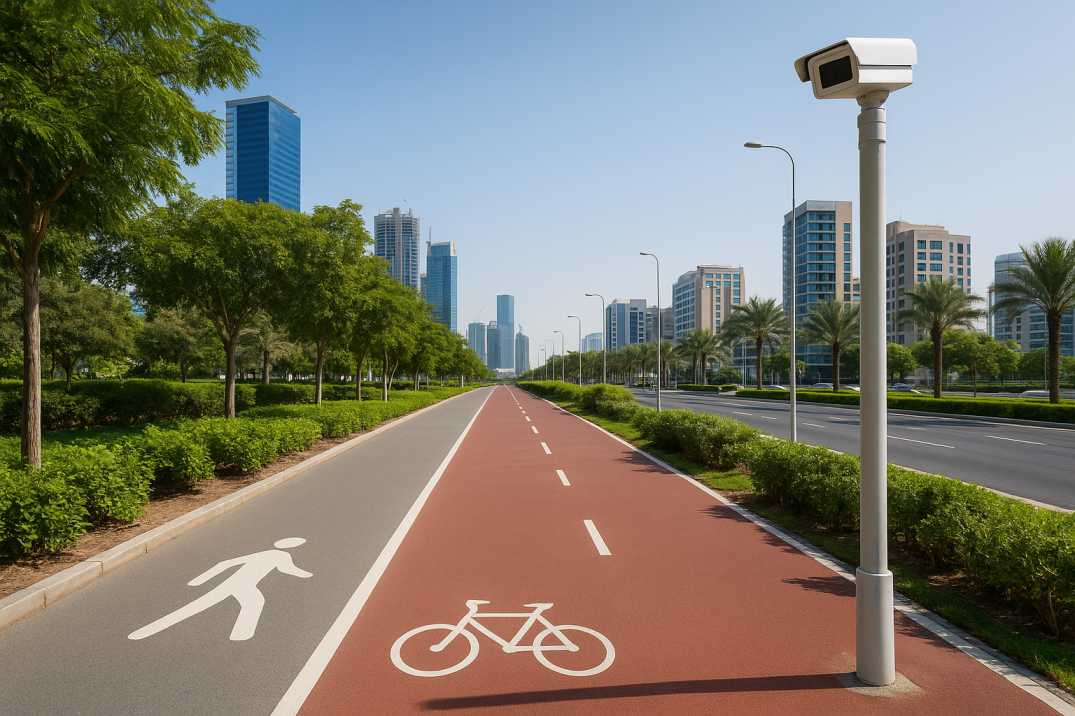Contact Us
RoadVision AI
Private Limited
Office No. 308 & 310, B Block
Ansal Chamber - 1, Bhikaji Cama Place,
Near Engineers India Limited (EIL) Bhawan, New Delhi - 110066
© 2024 | RoadVision AI | All rights reserved
As Qatar continues to invest in modern, sustainable cities aligned with its National Vision 2030, urban planners are focusing on transforming the way citizens move. Encouraging walking and cycling is no longer just a lifestyle choice—it’s a national priority for cleaner, safer, and smarter urban mobility.
AI technologies have emerged as critical tools in this transition, supporting road asset management Qatar, AI-based Infrastructure management, and AI in urban planning Qatar. These systems help authorities monitor, analyze, and enhance transport infrastructure with accuracy and efficiency.

Qatar’s rapid urbanization has placed pressure on transportation systems to evolve. The government’s mobility goals emphasize:
The focus on walkability and cycling complements national efforts toward sustainable development. Integrating AI tools for sustainable mobility supports these goals by providing real-time insights into infrastructure use, safety, and performance.
Modern urban planning requires vast datasets—traffic patterns, pedestrian movement, environmental impact, and asset conditions. With AI in urban planning Qatar, authorities can simulate walking and cycling behavior across different areas, identify unsafe crossings, and prioritize infrastructure improvements.
Infrastructure deteriorates over time, and manual inspections can be inconsistent. AI-based Infrastructure management helps detect pavement distress, faded markings, or lighting issues automatically through computer vision and sensors. This ensures that walkways and cycling tracks remain safe, accessible, and well-maintained.
The backbone of any mobility ecosystem is data. Using automated traffic analysis, AI systems can monitor vehicle, pedestrian, and cyclist movements in real time. The insights derived from this data identify high-risk zones, near-miss points, and accident-prone intersections. This allows for smarter design interventions such as raised crossings or separated cycle lanes.
AI-powered data analysis can reveal where people naturally choose to walk or cycle. With AI-based Traffic survey tools, planners can visualize movement density maps and determine where new pedestrian bridges, crossings, or cycle tracks are needed.
Integrating data from road asset management Qatar and AI-based Infrastructure management allows maintenance teams to focus resources where footfall and cycling activity are highest. This ensures cost-effective, impact-driven improvements.
By analyzing video feeds and sensor data, automated traffic analysis detects conflicts between vehicles, pedestrians, and cyclists. Insights from these systems guide infrastructure redesigns that eliminate blind spots and improve traffic signal timings for non-motorized users.
The integration of AI in urban planning helps cities visualize how people move and interact with urban spaces. This supports decisions like widening sidewalks, adding shaded walkways, and connecting disconnected cycling routes.
AI’s continuous monitoring ensures that changes in walking or cycling behavior can be tracked after interventions. Using AI-based Traffic survey tools, authorities can compare “before and after” data to confirm whether safety and accessibility goals are met.
By embedding these technologies within AI tools for sustainable mobility frameworks, Qatar can ensure every infrastructure upgrade contributes to a safer, greener urban future.
As smart cities continue to expand, the integration of AI with AI tools for sustainable mobility will redefine how people experience transportation. Walkability and cycling will no longer be seen as alternatives but as essential components of Qatar’s connected urban network.
With AI, authorities can move from reactive planning to predictive, insight-driven decision-making—ensuring every citizen enjoys safe, sustainable, and efficient mobility options.
RoadVision AI is transforming infrastructure maintenance with AI-powered solutions. By conducting detailed traffic surveys and delivering high-quality road data, it enables early detection of issues like surface cracks and pothole repairs. Fully aligned with IRC Codes and Qatar’s road regulations, the platform ensures smarter road planning, enhanced safety, and efficient infrastructure management.
If you’re looking to modernize your city’s mobility infrastructure or understand how AI can help, book a demo with us to explore tailored AI solutions for Qatar’s infrastructure needs.
Q1. How can AI improve walkability in urban areas of Qatar?
AI enables continuous monitoring of pedestrian flows, helping planners identify where sidewalks, crossings, and safety features need enhancement.
Q2. Why is automated traffic analysis critical for cycling infrastructure?
Automated traffic analysis detects risk zones for cyclists and evaluates road-sharing behavior, allowing safer route planning and lane segregation.
Q3. What are the benefits of using AI-based infrastructure management?
AI-based Infrastructure management ensures timely maintenance, extends asset life, and supports data-backed investment decisions for walkways and cycling routes.